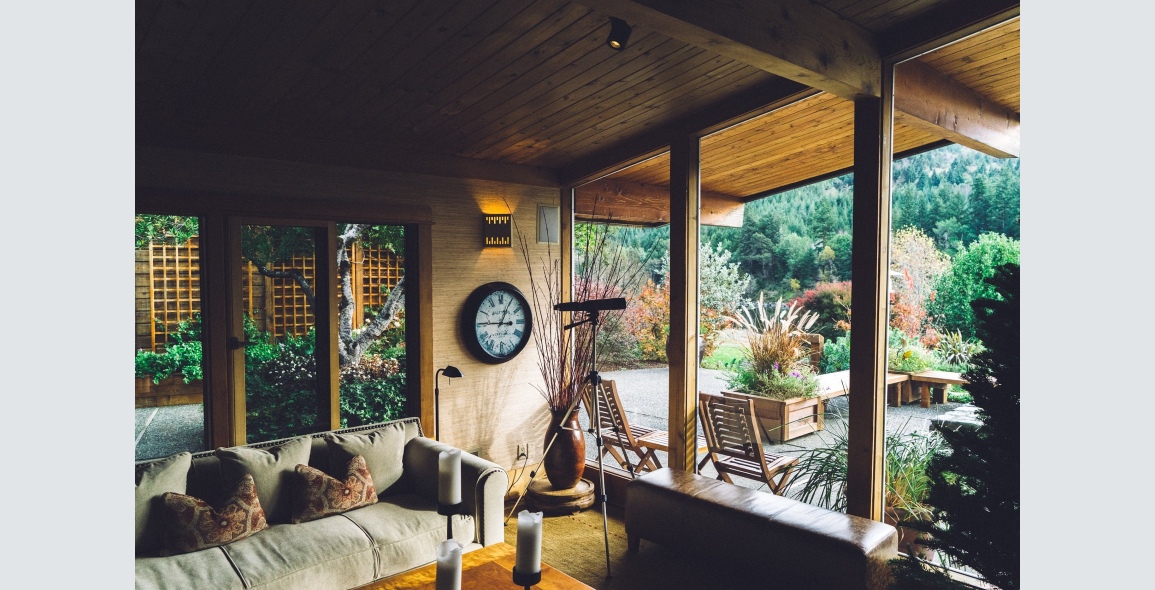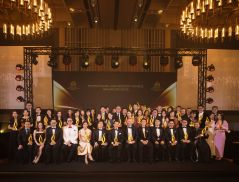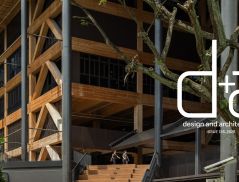
Editor’s note: This is the second part of the fourth story in a six-month-long collaboration we are doing with the Interior Design Confederation Singapore to examine how the industry can up its game. Read the first part here.
What form will the interior design industry take following the impact of COVID-19?
We get inputs from an Indonesian academic and a Polish futurist, who each offer a unique perspective from their vantage point.
Three Shifts Needed In Thinking About The Interior Space
By Professor Paramita Atmodiwirjo, Department of Architecture, Universitas Indonesia
1. Don’t limit the scope to enclosed, interior settings
The lessons learned from the COVID-19 pandemic suggest the need to depart from the traditional definition of “interior”, which we normally consider as indoor space or enclosed space inside the building. The pandemic has triggered the emergence of the new definition of interior that is expanded to the outdoor or outside interior.
Many of the indoor activities are now moved to the outdoor location. Learning and working activities are now conducted outside by establishing outdoor classrooms and outdoor office spaces. Leisure and hospitality sectors begin to establish more ideas of activities and experiences that are not confined to the indoor building, but maximising the potential of outdoor spaces.
It becomes necessary to shift from the design of interior surfaces and elements inside the architectural boundaries, and expand into the adaptation of the outdoor setting to become a kind of outdoor interior. It is time to depart from the traditional definition of interior as physically bounded spaces.
The way we think about spaces should include a wide range of conditions with various degrees of openness and enclosure that define the human activity spaces. Interior is no longer defined by rigid physical boundaries but could demonstrate various interior qualities that are independent from the physical enclosure.
2. Expand the possibilities of flexibility, adaptability and temporality
Interior design resilience is now the main challenge to be addressed by all design practice. We need to reconsider our design approaches that tend to consider spaces and buildings as static, permanent and should be designed to last for a long time. Interior spaces that are needed now are those that could be transformed easily and adapted in response to the changes in the society.
The idea of design that is “long lasting” needs to be redefined as the ability to adapt through different times, with different functions and not to be obsolete quickly. Flexible design becomes a key term for interior design practice at the present and in the future. Everything will start from thinking about what kind of program changes may happen to our design in the near and far future, rather than thinking about how our design will be used for a specific program at the present time only.
The change of interior program also needs to consider its existence within the larger urban context. Because of the pandemic situation with all the restrictions of movement and access, our urban context is now moving toward the idea of micro mobility. The environment in proximity to home and neighborhood now play an increasing role in the everyday life of the urban society.
This will inevitably change the types and scopes of interior programs and projects. The priority is shifting, from the larger scale interior projects at the macro urban scale that previously dominated the interior design practice, into the interior at the more intimate scale, the smaller scope, and at the close proximity to the everyday life of the people.
The programming of interior space also needs to respond to the emergence of virtual technology. Many of our everyday activities are now moving into online platforms, which eventually raises a question on the role of physical interior space. It becomes a challenge for interior design practice to maneuver the design strategies to provide a hybrid experience of space, between online and offline, between the real and the virtual. This requires a new understanding of the interior system, in which the physical materiality is merging with the elements that are more immaterial.
3. Adopt a new role in preventing the spread of infection
There is a shift in priority due to the more demand on the health and safety requirements. With the continuing risk of disease transmission, there is now a long list of technical requirements regarding the natural ventilation, air change rate, mechanical system, maintenance of material surface, and other environmental performance related to health.
Priority on the environmental and surface performance should be put on top of other priorities, more importantly than ever before. To achieve this, design needs to be backed up by evidence, to ensure the health and safety of the occupants. It is time for interior designers to move toward the direction of evidence-based design practice.
Understanding how the interior space works in relation to disease transmission becomes very important. We do not want our space to be the cause of massive disease transmission. Simulating the different scenarios of air flow inside the space could give us an understanding of what may happen in the space. Computational simulation of indoor space performance needs to be an integral part of interior design works. It should guide the design decision on spatial configuration, as well as the choice of systems and elements to be implemented in the space.
Scientific knowledge on how the interior surface could possibly act as a medium for disease transmission also becomes important. The choice of interior surfaces and materials can no longer be guided merely by taste, visual aesthetics and emotional mood. The decision needs to be guided by awareness on the further impact of materials on the occupants’ health and safety.
Plenty of guidelines, research reports and evidence regarding the role of interior space for health and safety have been generated since the beginning of the pandemic. All these references could become the important sources for interior designer to comply with the current requirements of health and safety.
The emergence of digital technology also allows the design practice to perform the optimisation of the shape of space, surface and object. This is an example of computational work to optimise the shape of the surface to assess its self-cleaning ability.
It is now possible for interior design practice to utilise the ability of digital technology to explore various possibilities of forms and spaces, to assist the process of design decision making. In this way, the forms and shapes are created not merely based on visual aesthetic preference but strongly based on scientific approach, to ensure the optimised performance of interior spaces.
What will the world be like in 20 years?
By Zuzanna Skalska, Founding Partner, 360Inspiration
Scenario 1: Kind Capitalism
Main Idea: To serve all stakeholders, not just shareholders
In a new economic and social order, tech giant owners have concluded that survival and development require redistribution and a bold approach to social and environmental challenges. A seemingly impossible mutation of capitalism, where those who have share their wealth to save the system. The future of the masses lies in the hands of corporate executives.
The leaders (version 5.0 of Henry Ford or Tomáš Baťa) remain at the top, taking on the role of welfare states. They collaborate with one another and use technology to solve current environmental and social problems. They do not wait for the state to get involved, because the state is far too weak and inefficient.
And why lose the initiative anyway? In this automated and robotized world, economic disparities are still huge, but the poor are rich enough not to complain. Individuals focus mostly on work and self-development. The wealthiest boldly enter the era of transhumanism. A new generation of consumers want to collect experiences rather than things. The economy is back on the growth track.
Scenario 2: Active Restoration
Main Idea: To accelerate Earth’s regeneration process for all
Something had to change in our approach to the world - and it did. The profit-oriented mindset has been replaced with a mindset that cares about Earth. Wise statehood initiates and stimulates private and public organisations to act for a lasting restoration of the environment. We have come to believe that what is good for the planet is good for us. It wasn’t easy, but we eventually progressed from the first zero-waste manifests to a system where people actually recycle, re-manufacture, re-use, repair, and share. A well targeted technological progress has made full-scale circular economy a reality.
Growth has slowed, but not stalled. It is robust and sustainable. Science and ethics define goals, and automation and robotization guarantee development. The resulting wealth is equitably distributed. Rather than wait for it to trickle down, we have introduced universal basic income (UBI) simply to lift those who were at the bottom. With UBI, work is no longer a necessity and has become more meaningful. People choose to work to contribute to the common good, rather than merely to survive. The social structure is flat and wealth is distributed. Cooperation is a source of meaning. Everyone contributes to a common goal: to accelerate regeneration of the planet after a period of intense exploitation.
Scenario 3: Self-Consumed
Main Idea: Accelerated consumption through intentional use of behavioural surplus
Everyone had been waiting for a change, but it never came. Companies maximize profits. Consumer are too busy consuming. States are too weak and need to resort to oppression and manipulation to survive. International consensus has not been achieved. Despite lofty pledges, the environment is still being poisoned.
The economy has stalled. Black swans have ruined businesses. Technology has not saved us from ourselves. Corporations fight tooth and nail for the attention of over-stimulated consumers. Large companies own an ever-larger piece of the pie, with the blessing of the state gladly using the data collected by them. Consumers share their data with tech giants who use that data to drive sales, sell it to others and feed the manipulative and oppressive state apparatus.
Economic disparities grow wider. The gap is growing not only between the elites and the masses, but also between the real world and its virtual manifestation which has become home to the masses. Rather than display knowledge, screens separate us from the world. Mindless technology does not solve problems, but helps people forget them for a while.
Scenario 4: Less Is Enough
Main Idea: A sense of threat stimulates human solidarity
The world has been crumbling under the pressure of environmental, pandemic, economic and migration crises. Black swans have become a permanent presence. States have been doing their best, but still cannot deal with them. The permanent crisis prompts the society to look for solutions at the level of local communities. When you can’t beat a problem at the macro level, you fight it at the micro level.
Municipalities, mayors, residents’ associations, pop-up action groups and local companies work together to address the most urgent issues. In the wake of migrations, bankrupting corporations and conversion of idle land into community gardens, cities look increasingly like villages. They fall apart to become clusters of independent settlements where everything is within a walking distance. People have lost faith in technology. Shortages and dwindling consumption promote the culture of second hand, upcycling and repairing. While the circular economy paradigm has not been successfully deployed as a whole, it flourishes through bottom-up initiatives. Local communities have taken action to improve the natural environment they live in.


 Share
Share








